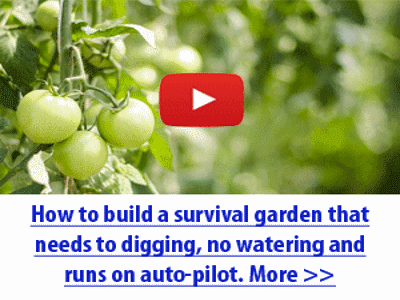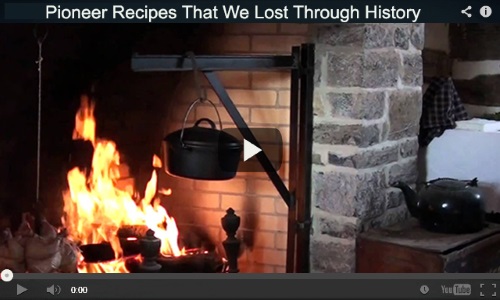Would you like to know how to grow your own organic food in your backyard?
Some Basic Tips
Growing your own vegetables is a rewarding activity. Not only does it give you the joy of working outside with the earth, it provides many nutritious meals for your family. Here is a little advice to get you started and to make your vegetable garden both easier and more productive.
The first step in having a successful vegetable garden is preparing the soil for seed planting. Well-prepared soil makes it easier for seeds to germinate and for seedlings to thrive. Your vegetable garden should be well-drained, and soil preparation should be deep, using plenty of rich organic matter like compost to help it retain moisture.
It’s a good idea to check the soil for pH or acidity. Vegetables usually need more alkaline soils. You can either submit your soil for testing at a laboratory, giving you very detailed results, or you can purchase an inexpensive soil tester at the local nursery or hardware store.
The soil should be relatively dry before you begin working or plowing your vegetable garden plot. Make sure your plot has easy access to water and locate it where you can get both full sun and partial shade to encourage different vegetable garden species. Most productive vegetable gardens need at least an inch of water, whether it comes from above in rain or from the tap, every week during the growing season. You can add a simple irrigation system with perforated piping to assure your vegetable garden gets the moisture it needs for thriving vegetable plants.
Before you get started, be sure to learn all you an about vegetable seeds and about the specific vegetables you want to harvest later on. Look for information on vulnerability to insects and fungus, germination requirements, needs for the timing and amount of light, and general plant hardiness. Be aware of what planting zone you’re working in. This will help you decide what types of plants to raise and when to plant and harvest.

To assure abundance, plant more seeds than you want in vegetable plants, as some of your seeds won’t germinate. Keep your vegetable garden moist (not muddy) until your seedlings show their second set of leaves. Continue to thin out the vegetable garden rows throughout the growing season so that the most hardy plants are highly productive. Test the soil regularly to assure it contains enough nutrients to feed all your healthy vegetable plants and use natural fertilizers for healthy plants.
If you decide to use manure, be sure that you know which plants are more sensitive. Manure can burn and damage vulnerable vegetable plants. If you have the time and space, making your own compost is a wonderful way to provide natural organic fertilizer, and it cuts down on the amount of garbage you contribute to the local landfill.
Healthy soil and plants are the best insurance against harmful insects and pests. This means using natural compost, watering regularly, and providing good drainage. You can also plant a border of marigolds around your vegetable garden to prevent aphid infestations.
A critical part of successful vegetable gardening is keeping your garden free of weeds. They steal water, light, and nutrients from your vegetable plants. Be sure to hoe your vegetable garden and cultivate the soil frequently, especially after it rains or you water your vegetable plants. Weeds are much easier to remove when the soil is loose and moist. Be careful, though, not to damage your vegetable plants when you pull weeds that are close to the stems or roots. Covering the soil between your vegetable garden rows with a light layer of pine needles mixed with cut grass will discourage weeds, as will laying wet newspaper between the rows.
These are only a few tips for having a productive vegetable garden. But this basic advice will take you a long way toward a healthy family diet throughout the growing season.
THIS IS THE EASIEST WAY TO HAVE A VEGETABLE GARDEN ECONOMICALLY AND QUICKLY THAT EXISTS!!! MUCH MORE A PRODUCTIVE THAN A TRADITIONAL WAY!!
Straw Bale Gardening
Hay bale gardening is probably the most fun you’ll have growing your own food and herbs, requiring almost no work or maintenance.
Before we get into why hay bales are superior to straw bales, let’s first define what they are:
Straw bales are basically stalks of plants, usually corn, that have been dried out and baled together into various shapes and sizes.
Hay bales are grasses that have been dried and baled together.
Hydroponic Garden for profit at $918 per square foot, income, annually
This is a system, designed for maximum production and lowest cost
Lowest water consumption and lowest use of fertilizer
Lowest impact on ground water, too
Feed yourself; Feed others
Run your own silver mining operation
When your neighbors are starving, take their silver coins and gold
Viewer discretion advised; Humorous, but somewhat obscene
DIY Hydroponic Garden Tower – The ULTIMATE hydroponic system growing over 100 plants in 10 sq feet
This is a simple hydroponic system made with 4″ irrigation pipes. You can buy everything at your local hardware store and a local hydroponics store. It uses 80% less water than square foot gardening and does not require you to break your back bending down to garden.
This hydroponics growing system can grow:
Spinach
Zucchini
Peppers
Arugula
Yellow Squash
Chiles
Lettuce (of all types)
Pickle Cucumbers
Basil
Cabbage (of all types)
Broccoli
Mint
Peas
Cauliflower
Cilantro
Strawberries
Green Beans
Oregano
Radishes
Cherry Tomatoes
Parsley
Onions
Chives
Any above ground veggie
You can make them shorter and lower, such that it can fit onto the back of even a small patio. This homemade hydroponic system is a version of vertical hydroponics that can easily be disassembled and moved, if you are just renting, or can be put on rollers, if you want to move it around on your back patio.
Please consider building on yourself, so that you can produce local food in hyper-abundance. This beats food storage any day, and in a worst case scenario, you can sell the food for top dollar. When millions of people produce their own local food in hyper-abundance, then hunger doesn’t stand a chance.
1/2 Acre Urban Homestead in the Desert Grows Fruits, Vegetables & More
In this episode you will get a full tour of this urban homestead, including many of the different edible crops growing. You will discover some of the techniques that were used to make this a bountiful, and productive garden.
You will learn how to quickly and easily dig a 3’x3′ foot hole into hard desert soil, how they start their seeds and transplants, how to plant two fruit trees in one hole, some of the best nutrients you can add to your garden, and so much more.
You will also discover how standard EMT electrical conduit was used to make garden structures such as a bird netting frame, hoophouse frame and even a trellis.
After watching this episode you will learn alot about starting and growing your own urban homestead so you can supply you and your family with a variety of fresh fruits and vegetables.
What is Aquaponics? How it Works & Why an Aquaponic Setup Can Fail
Aquaponic Place in Waimanalo, Hawaii to share with you what exactly is Aquaponics, and how it works. You will discover the key element to a successful aquaponics system, and its more than just the fish and the plants. You will also learn some of the different vegetables, fruits, and herbs that can be grown under aquaponics. You will discover a unique way for starting seed under aquaponics as well as watering baby plants automatically. You will learn what a bell siphon and how it operates without any power… After watching this episode you will have a really good understanding of how an aquaponics system works and why you may want to use it at home to grow some of your own food including vegetables and fish.
“MY SURVIVAL FARM”
…and it’s like nothing you’ve ever seen before… An A to Z guide on survival gardening that is easy to read and a joy to put into practice, full of photos, diagrams and step by step advice. Even a kid can do this and, in fact, I encourage you to let the little ones handle it, to teach them not just about self-reliance but also about how Mother Nature works.
Here is just a glimpse of what you’ll find inside:
How to plan, design and put into action high-yield survival garden that will literally keep you and your family fed for life, no matter what hits you, even when everyone else around you is starving to death. No digging and planting year after year and no daily watering because you’ll have more important things to worry about when TSHTF.
How to set up highly nutritious soil for your plants. Do this before you plant anything and you’re on your way to setting your food forest on auto-pilot for decades to come. I’m gonna tell you this one “weird” thing to add to the mulch that’s not only highly effective but also 100% free (because you already have it in your home right now).
Step-by-step instructions on how to plant over 125 plants inside your permaculture garden. Plus, special instructions on choosing the right ones for your climate. From Arizona to Alaska, you can do this anywhere…
How to “marry” your plants. We’re gonna tell you which grow well together and help each-other survive and thrive, so they don’t ever compete for sunlight and nutrients. You get the full table of plants that work well with one another as well as the ones you should NEVER be put together.
Our grandfathers had more knowledge than any of us today and thrived even when modern conveniences were not available. They were able to produce and store their food for long periods of time. The Lost Ways is the most comprehensive book available. All the knowledge our grandfathers had, in one place.Here’s just a glimpse of what you’ll find in the book:
Table Of Contents:
Making Your Own Beverages: Beer to Stronger Stuff
Ginger Beer: Making Soda the Old Fashioned Way
How North American Indians and Early Pioneers Made Pemmican
Wild West Guns for SHTF and a Guide to Rolling Your Own Ammo
How Our Forefathers Built Their Sawmills, Grain Mills,and Stamping Mills
How Our Ancestors Made Herbal Poultice to Heal Their Wounds
What Our Ancestors Were Foraging For? or How to Wildcraft Your Table
How North California Native Americans Built Their Semi-subterranean Roundhouses
Our Ancestors’Guide to Root Cellars
Good Old Fashioned Cooking on an Open Flame
Learning from Our Ancestors How to Preserve Water
Learning from Our Ancestors How to Take Care of Our Hygiene When There Isn’t Anything to Buy
How and Why I Prefer to Make Soap with Modern Ingredients
Temporarily Installing a Wood-Burning Stove during Emergencies
Making Traditional and Survival Bark Bread…….
Trapping in Winter for Beaver and Muskrat Just like Our Forefathers Did
How to Make a Smokehouse and Smoke Fish
Survival Lessons From The Donner Party
Get your paperback copy HERE
Here’s just a glimpse of what you’ll find in The Lost Ways:
From Ruff Simons, an old west history expert and former deputy, you’ll learn the techniques and methods used by the wise sheriffs from the frontiers to defend an entire village despite being outnumbered and outgunned by gangs of robbers and bandits, and how you can use their wisdom to defend your home against looters when you’ll be surrounded.
Native American ERIK BAINBRIDGE – who took part in the reconstruction of the native village of Kule Loklo in California, will show you how Native Americans build the subterranean roundhouse, an underground house that today will serve you as a storm shelter, a perfectly camouflaged hideout, or a bunker. It can easily shelter three to four families, so how will you feel if, when all hell breaks loose, you’ll be able to call all your loved ones and offer them guidance and shelter? Besides that, the subterranean roundhouse makes an awesome root cellar where you can keep all your food and water reserves year-round.
From Shannon Azares you’ll learn how sailors from the XVII century preserved water in their ships for months on end, even years and how you can use this method to preserve clean water for your family cost-free.
Mike Searson – who is a Firearm and Old West history expert – will show you what to do when there is no more ammo to be had, how people who wandered the West managed to hunt eight deer with six bullets, and why their supply of ammo never ran out. Remember the panic buying in the first half of 2013? That was nothing compared to what’s going to precede the collapse.
From Susan Morrow, an ex-science teacher and chemist, you’ll master “The Art of Poultice.” She says, “If you really explore the ingredients from which our forefathers made poultices, you’ll be totally surprised by the similarities with modern medicines.” Well…how would you feel in a crisis to be the only one from the group knowledgeable about this lost skill? When there are no more antibiotics, people will turn to you to save their ill children’s lives.
If you liked our video tutorial on how to make Pemmican, then you’ll love this: I will show you how to make another superfood that our troops were using in the Independence war, and even George Washington ate on several occasions. This food never goes bad. And I’m not talking about honey or vinegar. I’m talking about real food! The awesome part is that you can make this food in just 10 minutes and I’m pretty sure that you already have the ingredients in your house right now.
Really, this is all just a peek.
The Lost Ways is a far–reaching book with chapters ranging from simple things like making tasty bark-bread-like people did when there was no food-to building a traditional backyard smokehouse… and many, many, many more!
Books can be your best pre-collapse investment.
The Lost Ways (Learn the long forgotten secrets that helped our forefathers survive famines,wars,economic crisis and anything else life threw at them)
Survival MD (Best Post Collapse First Aid Survival Guide Ever)
Conquering the coming collapse (Financial advice and preparedness )
Liberty Generator (Build and make your own energy source)
Backyard Liberty (Easy and cheap DIY Aquaponic system to grow your organic and living food bank)
Bullet Proof Home (A Prepper’s Guide in Safeguarding a Home )
Family Self Defense (Best Self Defense Strategies For You And Your Family)
Survive Any Crisis (Best Items To Hoard For A Long Term Crisis)
Survive The End Days (Biggest Cover Up Of Our President)





I need to learn to grow things
Did you learn?